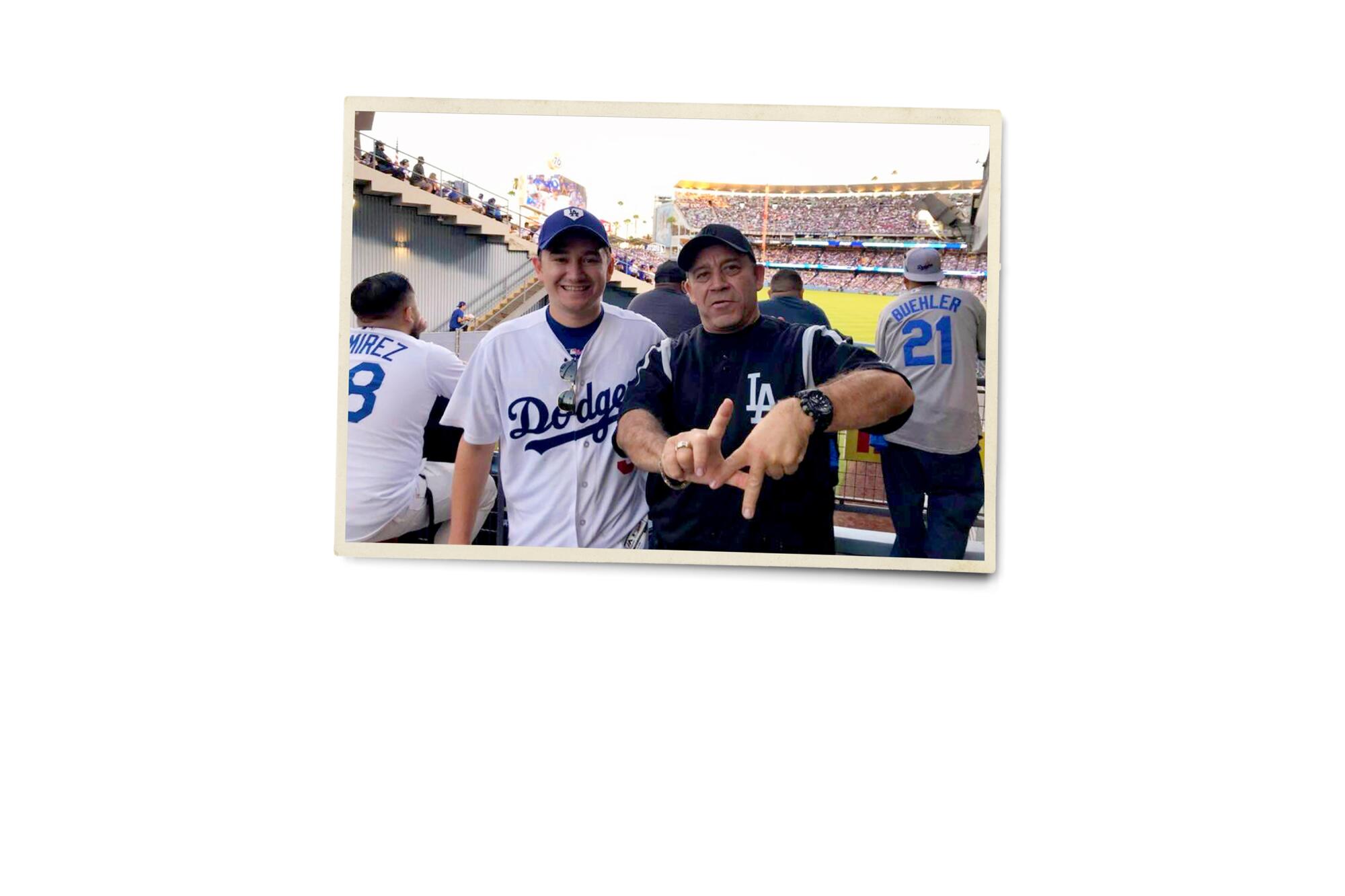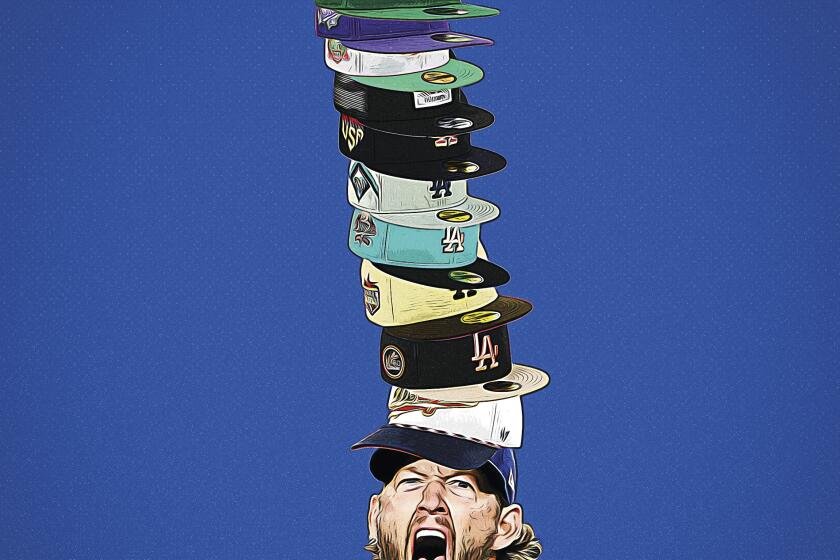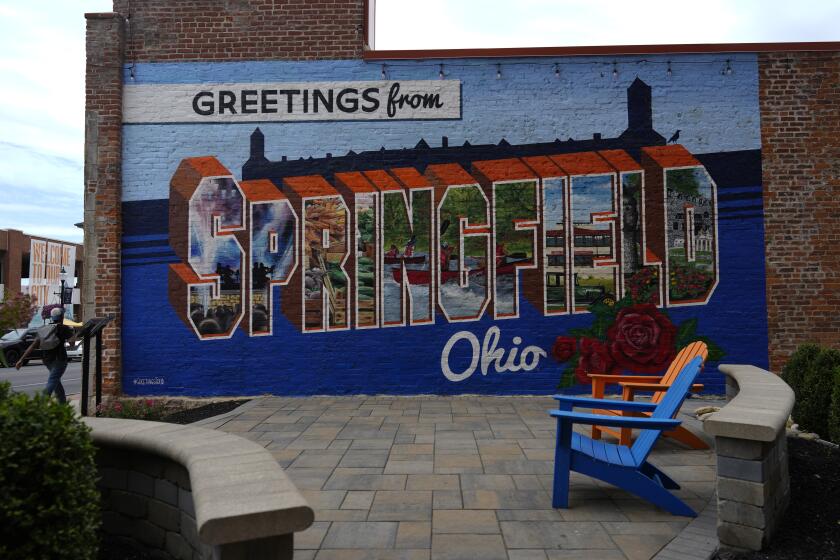
Gary Chapman’s “The Five Love Languages” famously breaks down how humans demonstrate their commitments: with words of affirmation, quality time, gifts, acts of service and physical touch.
When my big brother David Porras died suddenly this summer, I discovered a sixth category: sports. The Los Angeles Dodgers, in particular, emerged as a unique love language for my grieving family and David’s friends.
David, as far as I know, did not ponder love languages. Yet he was fluent in the language of camaraderie, especially when the topic shifted to sports. After all, even strangers can talk about the Dodgers together. Who won, who lost and what catch/run/pitch made hearts stop — these are safer topics for conversation than politics or personal feelings. But sports talk can also transcend small talk and become a shared field of memories, a tie that binds.
The Nayarit Restaurant’s authentic Mexican food, diverse clientele and ripple effect helped make L.A., and Echo Park, what it is today.
This realization came to me unexpectedly when Teddy Reyes came by my mom’s home to pay his respects within a day of David’s passing. Amid the raw grief and palpable awkwardness, I asked Teddy about how he and David first connected. Teddy’s eyes lighted up: They were 7 years old, playing Little League.
Later, Dave Navarro, reminisced about my brother’s encyclopedic knowledge of high school sports records, Dave’s included. David went to Marshall, Dave went to Wilson, but David filed away a trove of Dave’s high school highlights — football in this case — and made him feel seen, valued and known.
My brother and I were raised in Echo Park in the 1960s and ’70s, and we were “Doyers” fans for as long as I can remember. Dodgers baseball was always simply part of our life, it anchored us proudly in place in L.A.
By age 10, David and his friend Minh Chau would walk to games at Dodger Stadium, entertaining themselves by kicking a can down the street coming and going. Even as an adult, David treated every home game like a pilgrimage, gathering a crew at our family home, and walking through Echo Park to the stadium.
Why do fashion Dodgers hats have no limits, ranging from rust to neon orange, pale yellow to hot pink? Fans love them.
His last game was on Father’s Day, two weeks before he died, with a 15-person entourage including his son, Justin, because that’s how David rolled. (That’s David and Justin at Dodger Stadium in the photograph above.) His love for the Dodgers created a community.
The day Teddy visited, he brought a flower arrangement whose blossoms had been dyed Dodger blue and white. Even in our grief, my family was delighted by its novelty — do they dye the roses? — and my 90-year-old mom, who had never expected to mourn her only son, smiled. Later the same day, David’s girlfriend, Delia, brought us Dodger-themed blue and white doughnuts from Dunkin’.
We decided to embrace the Dodger theme for a celebration of David’s life. Alex, the manager at the Elks Lodge where David worked and where we planned to hold the memorial, designed an invitation with the Dodger Stadium outfield as the background, with a deep Dodger Blue sky.
People in L.A. routinely wear Dodger jerseys, even when they get dressed up (it makes sense: a team shirt can cost more than $150). Our invitation called for black or Dodger Blue attire, team shirts welcome. Even our tiniest guest, nephew Cal, came in his calavera Dodger onesie.
I had given away David’s collection of high-quality Dodger gear — a dozen custom jerseys, a Dodger blue guayabera with the L.A. logo — as keepsakes to those he was closest to, and many of them showed up wearing the shirts at the memorial. In lieu of flowers, we suggested mourners donate to the Los Angeles Dodgers Foundation. Among its good works, the foundation improves baseball diamonds in public parks, the fields where David and I, his son, godson, nephews all played ball.
My Blue Heaven took on a whole new meaning that day.
In navigating the sensitive issue of David’s ashes, we joked about signing up for Kids Run the Bases, a tradition after Sunday day games. The adult accompanying the kids could then surreptitiously trail ashes onto the field from a hole in their pocket.
More than 40 years after Fernando Valenzuela’s 1981 rookie season, Fernandomania once again struck Chavez Ravine.
We didn’t try it — honest. But for David, Dodger Stadium really was sacred ground. After a 1981 World Series game, he joined the crowd that stormed the field and stuffed his pockets with infield dust.
I couldn’t guess how many games he went to in his life — it may stretch past 1,000. He greeted ticket takers, vendors, fans as if they were family. And we’ve been moved by the condolences from the Dodgers community that have poured in since his passing. Even his all-time favorite player — Steve Garvey, whom he first met when he was 9 and got an autograph — reached out. Five stadium custodians paid their respects at the memorial.
Recently, and for the very first time, I ordered a Dodger jersey of my own. The back is embroidered with the number 6, Garvey’s number, and David’s last name, “Porras.” I can’t go to a game with my brother any more, but I can wear this talisman of my love for him, and keep talking baseball with him in my heart.
Natalia Molina is a professor of American studies and ethnicity at USC. Her latest book is “A Place at the Nayarit: How a Mexican Restaurant Nourished a Community.” Photograph by Kassandra Rodriguez.
More to Read
A cure for the common opinion
Get thought-provoking perspectives with our weekly newsletter.
You may occasionally receive promotional content from the Los Angeles Times.













